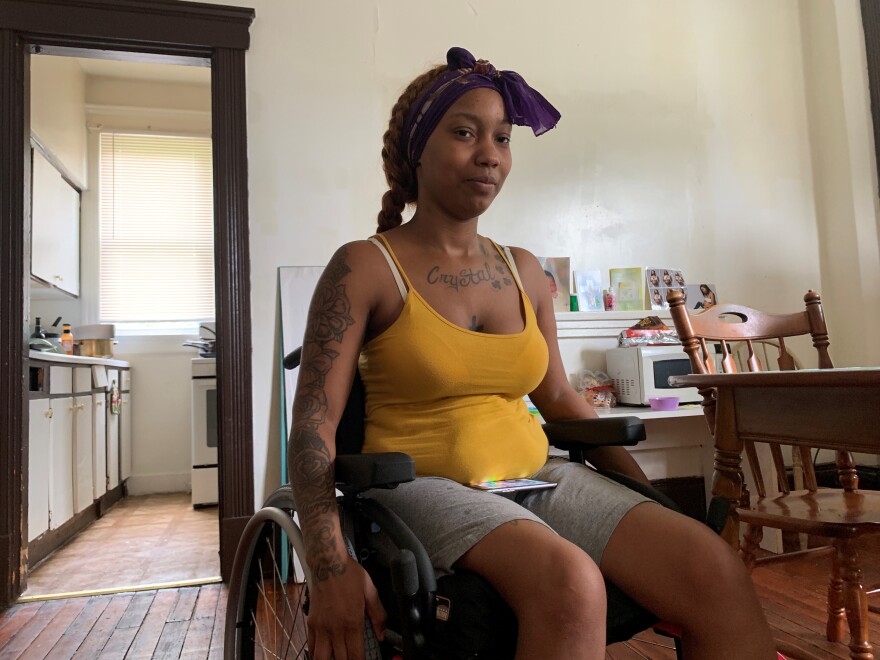Despite budget constraints, Strategies to End Homelessness is working to reduce the number of families experiencing the summer surge of homelessness.
The non-profit coordinates 30 organizations including Bethany House Services, Interfaith Hospitality Network of Greater Cincinnati and Freestore Foodbank, which all work to prevent and end homelessness.
Strategies to End Homelessness spends $3,900 per person for people in its homeless shelters, which covers utilities, food, and services like social workers and case managers who work with clients to get out of homelessness while they stay at a shelter.
Meanwhile, homelessness prevention costs $1,200 per person, which goes toward rental deposit, an average of 3-4 months rent, and services like social workers and case managers who help clients become self-sufficient in their new housing. Strategies to End Homelessness says prevention is the most cost-efficient.
"Whereas shelters and supportive housing programs, we have a significant amount of resources to fund those, which comes from the federal government," explains CEO Kevin Finn. "This most cost-effective solution - prevention - they won't fund. That's kind of a 'welcome to working with federal government' sort of moment. It is the most cost-effective, it has the best outcome, and our government won't pay for it."
Strategies to End Homelessness says the city of Cincinnati and United Way are the biggest funders of prevention, totaling less than a million dollars.
The organization says they shelter 15-20% more families in the summer.
"Just because there is an increase in calls doesn't mean there is an increase necessarily in our shelter and our funding," Program Director Jamie Hummer says. "We are having to turn more people away during the summer just because our capacity doesn’t always increase."
If selected as a client, the person has 30 days to find a place with help from a housing specialist. If they meet the deadline, they continue with a case manager to develop a long-term plan of becoming self-sufficient.
Parish Ivery is a single mother who is living in her apartment with support from the organizations. She says after spending four months in the Hamilton County Justice Center she contacted the Bethany House to get help finding housing.
Her focus was to find a roomy two bedroom in a quiet neighborhood where her kids could play outside. Her budget was $600.
Strategies to End Homelessness says Cincinnati's homeless population is 60% male, 40% female. Fifty-five percent of the population is under 35 years old and 25% are children.
Finn believes if systems like education, correction and health care let people fall through the cracks it can lead them to become homeless. "The fact that we have so many people in our community that are so over-extended paying for their housing," Finn says. "They may not even realize it but they're at risk of homelessness because if they hit a bump in the road - lose their job, get sick - they could very easily lose their housing and start a downward spiral toward homelessness."
While Ivery looked for permanent housing, she stayed with her dad, two stepsisters, stepbrother and her kids. "It was just like, 'We gotta be in our room,' " Ivory says. "I don’t want them being too loud and, you know, I don’t want them being up late but they're kids at the same time. They (her family) didn’t mind because they are kids and they don’t know, but I still had to get my own place."
The organization wants to help people who are couch-surfing family and friends' homes and have run out of options.
Ivery toured a duplex house on Dec. 20 and quickly signed.
After giving birth on Dec. 28, she began having pains that caused surgeons to amputate both of her legs. Emergency surgery threw her moving plans into disarray and brought the mobility of her new apartment into question. "What if I would have took the upstairs house? Where it was steps to get into the living room plus steps to get to the kitchen?" Ivory says. "I'm glad that I chose that apartment because it is roomy for me to get around in my wheelchair."
Ivery's Case Manager Cherish Edwards suggested the landlord install a ramp, but Ivery denied it because she is determined to walk with her prosthetics. She believes her apartment is perfect for her family and wants to stay if the landlord allows.
Finn says prevention solves a variety of short- and long-term problems. "Those are traumatic experiences that we don’t want kids to have to go through, since there is a generational aspect to both poverty and homelessness," Finn says. "If we prevent the 5-year-old child from being homeless we may have prevented them from being homeless in their late 20s."
The prevention program helped 243 families last year, which prevented 643 children from experiencing more trauma. The organization says funding for prevention is slowly continuing to decline.


